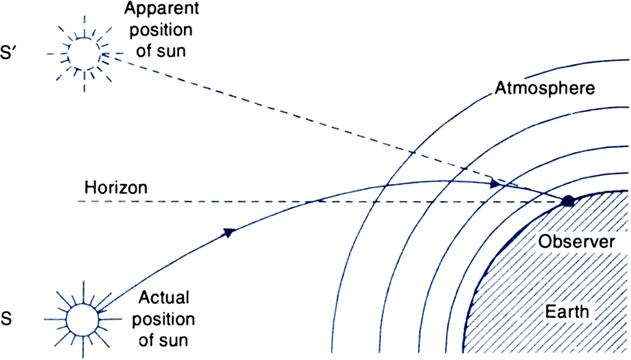Why do we observe the apparent random wavering or flickering of objects when seen through a turbulent stream of hot air rising above fire, a stove or radiator?
Random wavering or flickering of objects when seen through a turbulent stream of hot air rising above the fire is due to atmospheric refraction i.e., refraction of light by the earth’s atmosphere. The air just above the fire becomes hotter than air further up. Hotter air is less denser than the cooler air (denser) above it. Therefore, due to decreasing density or increasing temperature, there is decrease in refractive index. Since the physical conditions of the refracting medium (air) are not stationary, the apparent positions of the objects, as seen through the hot air, fluctuate. Consequently, the objects seen through such air show a wavering effect.
1650 Views

